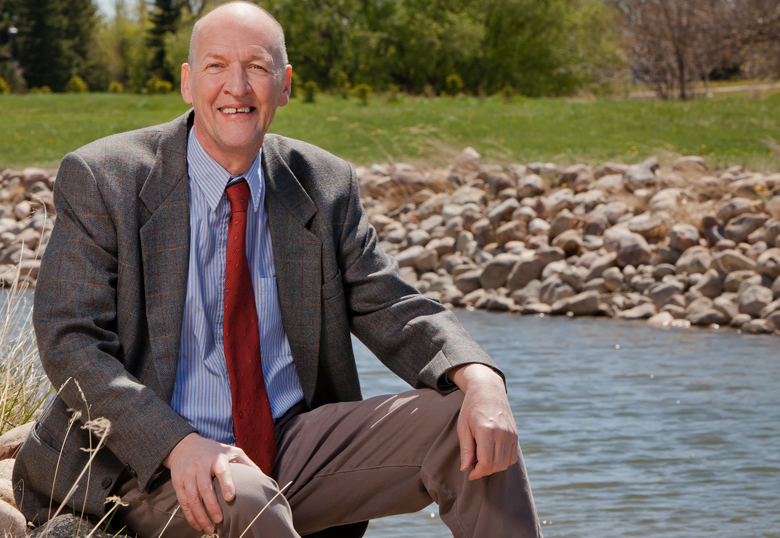As the saying goes, oil and water don’t mix. In Alberta’s oilsands, however, the division between those substances is less clear.

That’s because water plays a pivotal role in the oilsands region, from steam injection operations that release highly viscous underground oil deposits to tailing ponds that store water, clay, sand and oil left over from the extraction process. But with the Canadian Association of Petroleum Producers reporting that the oilsands used approximately 187 million cubic metres of fresh water in 2012, one question must be asked: what’s the best way to monitor and manage the environmental impact of the oilsands?
It’s a question that strikes at the heart of Dr. Joseph Rasmussen’s research. A professor of biological sciences at the University of Lethbridge, Rasmussen holds a Tier I Canada Research Chair in Aquatic Ecosystems and is director of the University’s Water Institute for Sustainable Environments (WISE). There, researchers are studying water resources, including natural science analyses of watersheds, and water quantity and quality, and investigating associated issues, such as water policy and economics.
Rasmussen’s own research is wide-ranging and includes the ecological impact of invasive fish species and the cumulative effects of industry contaminants on local waterways. When it comes to the oilsands, though, Rasmussen is focused on what he calls a “world-class scientific challenge.” That is, while it is generally accepted that the environmental impact of the oilssands should be tracked, there is no consensus about who should oversee the monitoring process, how much oversight is required and what it should entail, and how long environmental effects should be observed.
In 2010, Rasmussen was part of a national, independent advisory panel that reviewed the current state of environmental research and monitoring in the region around Alberta’s oilsands. Made up of six leading Canadian water and environment researchers, the committee was ultimately critical of the government’s fragmented approach to water quality monitoring, its heavy dependence upon industry self-monitoring and the dearth of reliable longitudinal data about the oilsands’ environmental impact.
“When companies are only interested in monitoring to meet basic compliance requirements, it doesn’t reflect what is happening on a long-term basis and doesn’t tell us if the requirements are adequate,” says Rasmussen.
To that end, he has partnered with Environment Canada to design a cumulative impact monitoring program – one that tracks environmental changes in the oilsands region and surrounding areas over time. Issues up for investigation include the exact composition of tailing ponds, and if suspicions are confirmed that tailing pond toxins are indeed leaching into groundwater, how much is actually being leaked?
In light of the seriousness of these issues, Rasmussen is aware of the high potential for finger-pointing among industry, government and community groups.
“The truth is, there are still many unknowns. It’s hard to separate out the effects that occur naturally, are caused by various aspects of oilsands production or by human population growth,” he says. “A monitoring program is intended to address these knowledge gaps so we can set up good environmental management practices. And we won’t get anywhere if we assume all environmental changes are caused by industry.”
